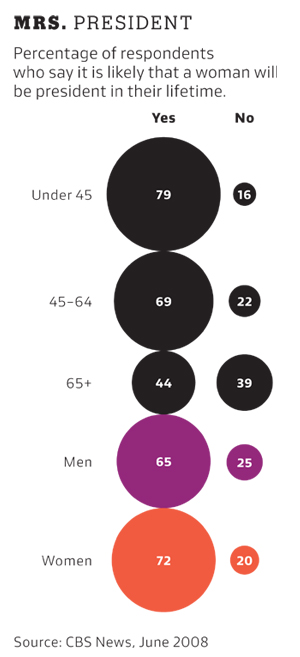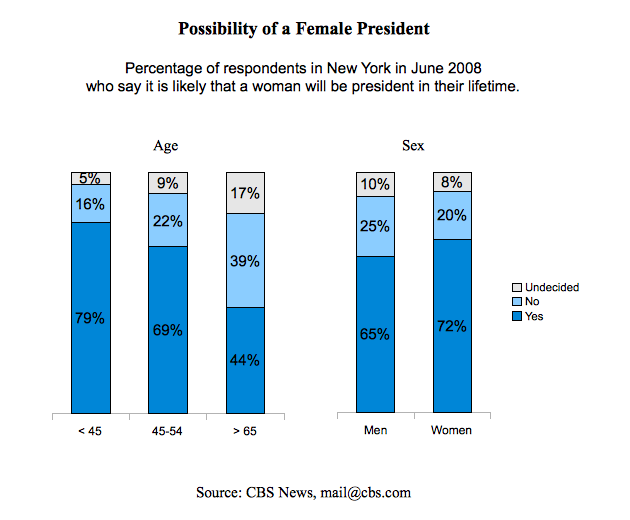Teaching:TUW - UE InfoVis WS 2008/09 - Gruppe 03 - Aufgabe 3
Aufgabenstellung
Zu beurteilende Grafik

Percentage of respondents who say it is likely that a woman will be president in their lifetime
Interpreting the Data
The graphic contains data based on a poll asking if the respondents think that it is likely that a woman will be president in their lifetime. The results were grouped into age and sex of respondents. The main statement of the graphic is that the answers are significantly different depending on the age of the respondents. With increasing age people tend to believe that it is less likely that a woman will be president in their lifetime.
Critics & Changes
Organization of Data
Age and sex are different categories and interpretations of the data. Therefore they should be separated more clearly from each other. The order of the graph from top to down doesn't help the viewer to understand the important statements of the data.
- This separation has been realized through splitting the data into two graphs. One for representing the age and the other for the sex. They have been arranged beside each other, to let the viewer read all important data easily from left to the right.
Color
The color used in the graph highlights the data concerning the sex and let it appear more important than the rest.
- The special colors for women and men have been removed. Color is now used to differentiate the answers of the respondents and to highlight the different percentages of the answers between different groups of age or sex.
Percentages
The sum of the percentages for each group of age or sex does not equal 100. So there might be a percentage of people who didn't answer or had no opinion.
- The missing percentages were categorized with "No Answer" to get a sum of 100 percent, consistent for each group of age or sex.
Improved Graphic
References
- [Few, 2004]: Stephen Few, Show Me the Numbers: Designing Tables and Graphs to Enlighten, Analytics Press, 2004, Chapter 7 - General Design for Communication.
